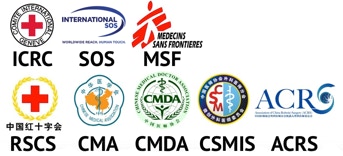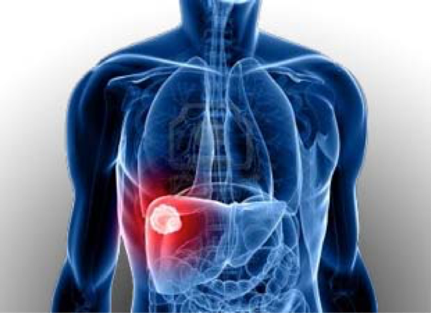

Doctors
Institutions
Conditions
Drugs
Insurances
TCM
Research
About Us
Contact Us
What Is Liver Cancer?
The liver continuously filters blood that circulates through the body, converting nutrients and drugs absorbed from the digestive tract into ready-to-use chemicals. The liver performs many other important functions, such as removing toxins and other chemical waste products from the blood and readying them for excretion. Because all the blood in the body must pass through it, the liver is unusually accessible to cancer cells traveling in the bloodstream.
The liver can be affected by primary liver cancer, which arises in the liver, or by cancer which forms in other parts of the body and then spreads to the liver. Most liver cancer is secondary or metastatic, meaning it started elsewhere in the body. Primary liver cancer, which starts in the liver, accounts for about 2% of cancers in the U.S., but up to half of all cancers in some undeveloped countries. This is mainly due to the prevalence of hepatitis, caused by contagious viruses, that predisposes a person to liver cancer. In the U.S., primary liver cancer strikes twice as many men as women, at an average age of 67.
Because the liver is made up of several different types of cells, several types of tumors can form there. Some of these are benign (noncancerous), and some are cancerous and can spread to other parts of the body (metastasize). These tumors have different causes and are treated differently. The outlook for health or recovery depends on what type of tumor you have.
The more common benign tumors of the liver include:
• Hemangioma
• Hepatic adenoma
• Focal nodular hyperplasia
• Cysts
• Lipoma
• Fibroma
• Leiomyoma
None of these tumors are treated like liver cancer. They may need to be removed surgically if they cause pain or bleeding.
Liver cancers include:
• Hepatocellular carcinoma (HCC)
• Cholangiocarcinoma (These are really cancers of the bile duct. They will not be discussed in this article.)
This article discusses hepatocellular carcinoma. It's important to know what type of liver tumor you have. Be sure to get that information from your health care provider.
What Causes Liver Cancer?
Primary liver cancer (hepatocellular carcinoma) tends to occur in livers damaged by birth defects, alcohol abuse, or chronic infection with diseases such as hepatitis B and C, hemochromatosis (a hereditary disease associated with too much iron in the liver), and cirrhosis. More than half of all people diagnosed with primary liver cancer have cirrhosis -- a scarring condition of the liver commonly caused by alcohol abuse. Hepatitis B and C and hemochromatosis can cause permanent damage and liver failure. Liver cancer may also be linked to obesity and fatty liver disease.
Various cancer-causing substances are associated with primary liver cancer, including certain herbicides and chemicals such as vinyl chloride and arsenic. Smoking, especially if you abuse alcohol as well, also increases risk. Aflatoxins, cancer-causing substances made by a type of plant mold, have also been implicated. Aflatoxins can contaminate wheat, peanuts, rice, corn, and soybeans. These are rare problems in most developed countries like the U.S. Other causes include the hormones androgen and estrogen and a dye formerly used in medical tests called thorotrast.
Other risk factors for liver cancer may include:
• Your sex. Men are more likely to get hepatocellular carcinoma than women.
• Your weight. Obesity can increase the risk for hepatocellular carcinoma.
• Your race. In the U.S., liver cancer is most common in Asian Americans and Pacific Islanders.
• Anabolic steroid use. Male hormones abused by athletes to increase muscle can slightly increase liver cancer risk with long-term use.
• History of diabetes. Studies have suggested a link between diabetes and liver cancer. This is likely due to the link between diabetes and fatty liver disease.
• Inherited metabolic diseases. Diseases that disrupt the normal metabolism of the body have been shown to increase your risk of liver cancer.
Rare diseases. Studies have found a link between liver cancer and some rare diseases like alpha -1-antitrypsin deficiency, tyrosinemia, and Wilson's disease.
How Do I Know If I Have Liver Cancer?
Screening for early detection of primary liver cancer is not performed routinely, but it may be considered for people at high risk for the disease. However, studies haven't determined if screening is beneficial for anyone. To diagnose liver cancer, a doctor must rule out other causes of liver dysfunction.
Patients at high risk include patients with a condition called hemochromatosis, chronic hepatitis, and alcoholics.
Additional tests include:
Blood tests that measure tumor markers -- the levels of these substances rise in the blood if someone has a particular cancer -- can aid diagnosis. Liver cancers secrete a substance called alpha fetoprotein (AFP) that is normally present in fetuses but goes away at birth. An elevated AFP in adults may indicate liver cancer as it is produced in 70% of liver cancers. Elevated levels of iron may also be a tumor marker.
• Imaging with ultrasound is the initial diagnostic test as it can detect tumors as small as one centimeter. High resolution CT scans and contrast MRI scans are used to diagnose and stage these tumors.
• A liver biopsy will distinguish a benign tumor from a malignant one. However, depending on the results of other tests, a biopsy might not be required to diagnose cancer.
• Laparoscopy, using tools and cameras through small incisions, is useful for detecting small tumors, determining the extent of cirrhosis, or obtaining a biopsy, and confirm previous tests, among other things.
What Are the Treatments for Liver Cancer?
Any liver cancer is difficult to cure. Primary liver cancer is rarely detectable early, when it is most treatable. Secondary or metastatic liver cancer is hard to treat because it has already spread. The liver's complex network of blood vessels and bile ducts makes surgery difficult. Most treatment concentrates on making patients feel better and perhaps live longer.
Patients with early-stage tumors that can be removed surgically have the best chance of long-term survival. Unfortunately, most liver cancers are inoperable at the time it's diagnosed, either because the cancer is too advanced or the liver is too diseased to permit surgery. In some patients, chemotherapy is given directly into the liver (chemoembolization) to reduce tumors to a size that may make surgery possible. This may also be done without chemotherapy (bland emoblization) in some cases, using ethanol instead. After surgery, radiation and chemotherapy have shown no advantage in improving survival. Patients in remission must be monitored closely for potential recurrence.
Cryotherapy, or freezing the tumor, and radiofrequency ablation (RFA), using radio waves to destroy the tumor, may be used to treat some cases of liver cancer. Radiation therapy can be given in various ways, but has its limitations due to the liver's low tolerance to radiation.
When used, the role of radiation is to alleviate symptoms outside of the liver or to relieve pain within the liver by shrinking the tumor. Radioembolization therapy uses substances to cut off the blood supply to the tumor.
A liver transplant may be an option for those with both liver cancer and cirrhosis. Although this procedure is risky, it offers some chance of long-term survival.
Advanced liver cancer has no standard curative treatment. Chemotherapy and low-dose radiation may control the cancer's spread and ease pain, however these are of modest benefit in this type of cancer. Most patients receive painkilling medication along with drugs to relieve nausea, improve appetite, and reduce abdominal or lower body swelling. The drug sorafenib (Nexavar) is the first drug to significantly improve the overall survival with advanced liver cancer and is considered the drug of choice for such patients. People with advanced liver cancer may choose to join clinical trials testing new approaches to treatment.
















